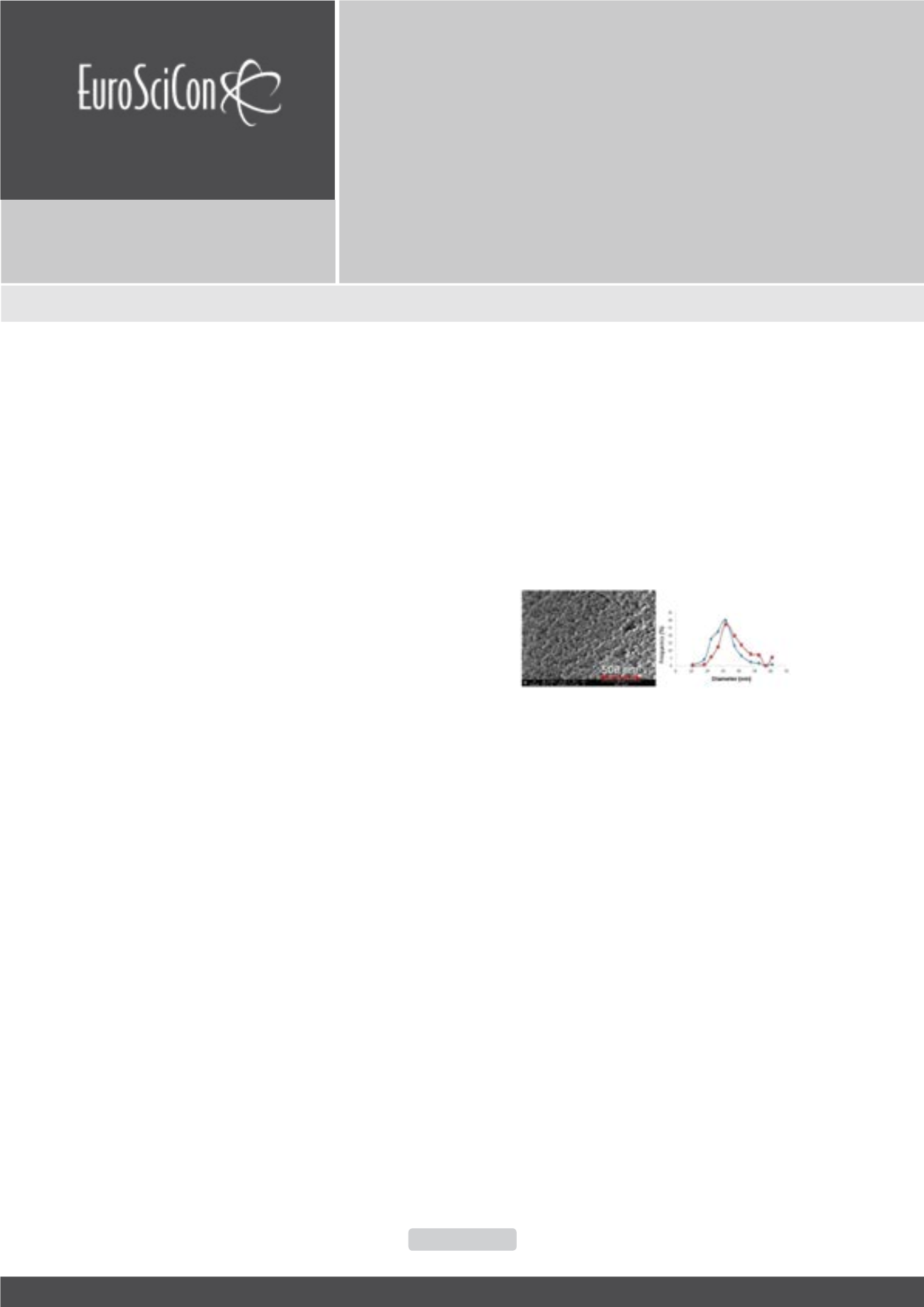

NanoMat 2018
Nano Research & Applications
ISSN: 2471-9838
Page 69
April 26-27, 2018
Rome, Italy
17
th
Edition of International Conference on
Emerging Trends in
Materials Science and
Nanotechnology
T
he consolidation of stone of ancient monuments, such as
middle age cathedrals, degraded because of natural ageing,
is an important topic for European cultural heritage conservation.
Usually tetraethyl orthosilicate (TEOS) based treatments are
used as consolidants because they lead to formation of stable
amorphous silica inside stones pores. While generally effective,
this treatment is more compatible with silicate stones and it
shows a tendency to cracking upon drying. It shows also the
tendency to induce damages because of the differential dilatation
behavior with respect to host stone. To consolidate carbonatic
stones, a carbonate based consolidant should be reasonably
developed to improve compatibility with the host stone. Moreover,
its nano dimension facilitates penetration into the stone micro-
porosities, with generation of a very high surface area resulting
in a high reactivity inside pores. For these reasons nano-calcite
may provide a good alternative to TEOS. Nano-calcite can be
prepared by the carbonation of calcium hydroxide in water in the
presence of interfacial agents. This reaction is very cheap and
well known, but the control of reaction parameters to achieve
nano-scale dimensions is quite complex. The present work
concerns the preparation of a water suspension containing
nano-calcite through the controlled carbonation of calcium
hydroxide in water in a pilot plant. The reaction was optimized by
keeping into account a statistical approach based on a simplified
design of experiment technique applied to the different reaction
parameters. Thanks to this approach the role played by several
parameters in determining the final morphology of the nano-
calcite was investigated. The preliminary laboratory testing of
nano-calcite onto a carbonate stone showed a good adhesion of
nano-particles in the host stone, unveiling interesting potentiality
of this treatment.
Recent Publications
1. Shi X, Rosa R and Lazzeri A (2010) On the coating of
precipitated calcium carbonate with stearic acid in
aqueous medium. Langmuir 26(11):8474- 8482.
2. Shi X, Bertóti I, Pukánszky B, Rosa R and Lazzeri A. 2011)
Structure and surface coverage of water-based stearate
coatings on calciumcarbonate nanoparticles. Journal of
Colloid Interface Science 362:67-73.
3. Verganelaki A, Kilikoglou V, Karatasios I and Maravelaki-
Kalaitzaki P (2014) A biomimetic approach to strengthen
and protect construction materials with novel calcium-
oxalate-silica nanocomposite. Construction andBuilding
Materials 62:8-17.
4. Sassoni E, Graziani G, Ridolfi G, Bignozzi M C and
Franzoni E (2017) Thermal behavior of carrara
marble after consolidation by ammonium phosphate,
ammonium oxalate and ethyl silicate. Materials and
Design 120:345–353.
5. Pondelak A, Kramar S, Kikelj M L and Škapin A S (2017)
In-situ study of the consolidation of wall paintings using
commercial and newly developed consolidants. Journal
of Cultural Heritage 28:1-8.
Nano-calcite preparation aimed at consolidating stones for
cultural heritage applications
Luca Panariello
1
, Maria-Beatrice Coltelli
1
, Valter Castelvetro
1
, Elisabeth Mascha
2
,
Johannes Weber
2
and
Andrea Lazzeri
3
1
University of Pisa, Italy
2
University of Applied Arts, Austria
3
INSTM - University of Pisa, Italy
Luca Panariello et al., Nano Res Appl, Volume:4
DOI: 10.21767/2471-9838-C1-009
Figure 1:
FESEM micrograph (left) and diameter distribution by
light scattering measurements (right) related to a nano-calcite
sample
















